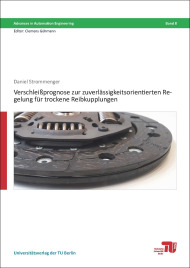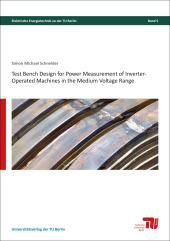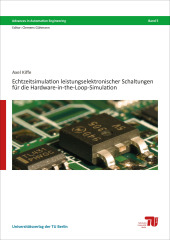Verschleißprognose zur zuverlässigkeitsorientierten Regelung für trockene Reibkupplungen

Size: 248 pages
Format: 14,8 x 21,0 cm
Publishing year: 2021
Format: 14,8 x 21,0 cm
Publishing year: 2021
Reihe: Advances in Automation Engineering ; 8
ISBN 978-3-7983-3196-9
19,50 €
In the development of modern vehicles demands on reliability increasing continuously. Formerly it was acceptable to visit a workshop in the event of damage. However, damage detection and repairement at an early stage will be expected in future. Predictive maintenance strategies are needed to reduce the risks associated with unexpected downtime and financial losses.
In this work, a predictive maintenance strategy by a reliability-oriented control is developed, which is based on wear estimation and prognosis. The development of the required methods is based on the example of a dry friction clutch, which represents an essential component in the classic powertrain. To implement the defined objective, a physical thermal model of the friction clutch is first derived. Subsequently, a wear model is developed on the basis of the theoretically expected wear behavior. The thermal model and the wear model are identified by experimental investigations on a transmission test bench. Based on the wear model, a remaining useful life prediction is developed. This prediction determines future wear from future stress by using the wear model. Therefore, future stress is extrapolated from past data. Finally, the predicted lifetime is used as an input variable of the reliability-oriented control. The reliability-oriented control consists of a model-predictive vehicle launch control and a superimposed fuzzy control. It adapts continuously the operating behavior of the clutch control to guarantee a required system lifetime.



